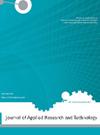哥伦比亚波哥大一家点心公司多产品计划和分销的转运和路线模型
Q3 Engineering
Journal of Applied Research and Technology
Pub Date : 2022-08-31
DOI:10.22201/icat.24486736e.2022.20.4.1330
引用次数: 0
摘要
在本文中,建立了一个模型,用于规划一家在3个生产中心生产6种饮料的公司的每周点心配送,该公司有可能使用位于波哥大的3个配送中心并供应22个消费者中心。由于运输成本对公司利润的影响,有必要确定系统节点网络中资源到目的地的最优规划,以及随后使用两种类型车辆的路线。因此,提出了一个两相模型。首先,通过比较两种技术建立了初始最优分配;一个基于开放转运问题(OTP),另一个基于容量转运问题(CTP),其确定使用配送中心作为中介从生产中心到消费者中心的行程。这种比较可以分析其效率,以选择成本和出行次数最低的模型。在第二阶段,在没有使用全部车辆容量的路线上进行了选路。这些路线是通过旅行推销员问题(TSP)确定的。因此,获得了一个全面的模型来进行产品分销的规划,在第二阶段获得了OTM模型的使用,该模型的距离减少了14%;与CTP模型相比,时间减少2.6%,总成本减少0.28%。在第二阶段获得了5条路线,其中配送中心2覆盖了59%的客户。本文章由计算机程序翻译,如有差异,请以英文原文为准。
Transshipment and Routing Model for Multi-Product Planning and Distribution at a Refreshment Company in Bogota, Colombia
In this article, a model is established for the planning of the weekly distribution of refreshments in a company that produces 6 types of beverages in 3 Production Centers, with the potential use of 3 Distribution Centers and supplying 22 Consumer Centers located in Bogota. Due to the impact of transportation costs on the company profits, it is necessary to determine the optimal planning of the allocation of sources to destinations in the nodal network of the system and its subsequent routing with two types of vehicles. Therefore, a two-phase model is proposed. In the first, the initial optimal assignments are established by comparing two techniques; one based on the Open Transshipment Problem (OTP) and the other on the Capacitated Transshipment Problem (CTP), which determine the trips to be made from production centers to consumer centers using distribution centers as intermediaries. This comparison allowed to analyze its efficiency to choose the model with the lowest cost and number of trips. In the second phase, routing was performed on routes that do not use the full capacity of the vehicles. The routes were established through the Travelling Salesman Problem (TSP). As a result, a comprehensive model was obtained to carry out the planning of the product distribution, obtaining in Phase II the use of the OTM model, which presented 14% less distance; 2.6% less time and 0.28% less than the total cost compared to the CTP model. In Phase II 5 routes were obtained, of which Distribution Center 2 covers 59% of customers.
求助全文
通过发布文献求助,成功后即可免费获取论文全文。
去求助
来源期刊

Journal of Applied Research and Technology
工程技术-工程:电子与电气
CiteScore
1.50
自引率
0.00%
发文量
0
审稿时长
6-12 weeks
期刊介绍:
The Journal of Applied Research and Technology (JART) is a bimonthly open access journal that publishes papers on innovative applications, development of new technologies and efficient solutions in engineering, computing and scientific research. JART publishes manuscripts describing original research, with significant results based on experimental, theoretical and numerical work.
The journal does not charge for submission, processing, publication of manuscripts or for color reproduction of photographs.
JART classifies research into the following main fields:
-Material Science:
Biomaterials, carbon, ceramics, composite, metals, polymers, thin films, functional materials and semiconductors.
-Computer Science:
Computer graphics and visualization, programming, human-computer interaction, neural networks, image processing and software engineering.
-Industrial Engineering:
Operations research, systems engineering, management science, complex systems and cybernetics applications and information technologies
-Electronic Engineering:
Solid-state physics, radio engineering, telecommunications, control systems, signal processing, power electronics, electronic devices and circuits and automation.
-Instrumentation engineering and science:
Measurement devices (pressure, temperature, flow, voltage, frequency etc.), precision engineering, medical devices, instrumentation for education (devices and software), sensor technology, mechatronics and robotics.
 求助内容:
求助内容: 应助结果提醒方式:
应助结果提醒方式:


